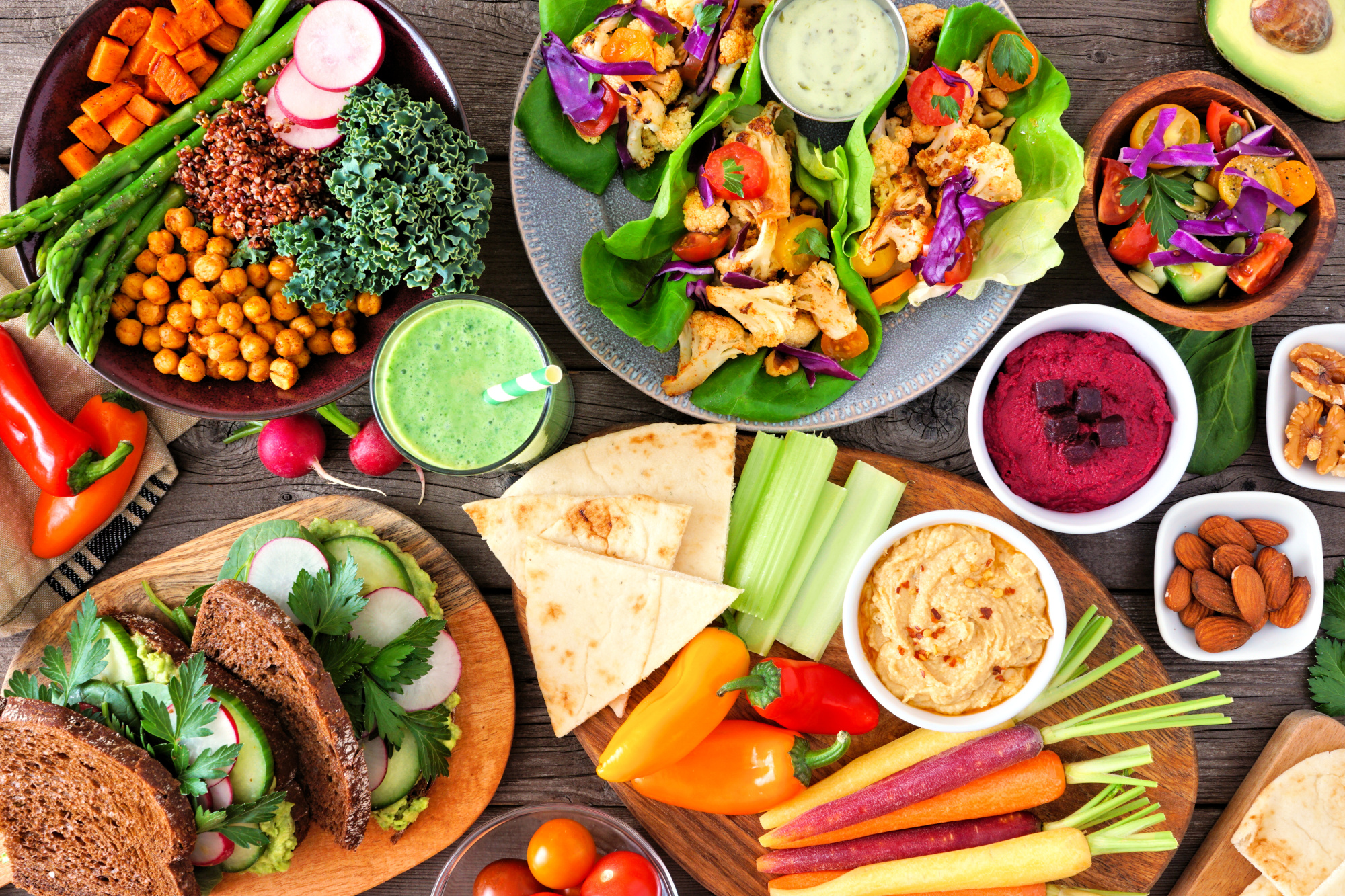Riding the alt-seas to success with seafood products made from plants, cellular agriculture, and fermentation
Seafood is an industry of immense depths – worth more than US$257 billion1 and growing year-on-year. To put this swell into perspective, global fish consumption has increased by about 30% since 1998,2 but scientists project it will increase by a further 80% by 2050.3
Experts also predict that the world’s oceans won’t be able to keep up with this demand, with over 90% of ‘fish stocks’ considered either over-fished or exploited close to the point of ‘unsustainability’.4 5
Not only does this threaten global food security and economic stability (for people who have built livelihoods around seafood), but it also spells ethical, ecological and climate disasters.
What to do?
Fortunately, there is a tasty, sustainable, profitable, and forward-thinking solution available: alternative seafood made from plants, cultivated meat and through fermentation-enabled technologies.
And the marketplace is already gaining momentum.
Read on to uncover must-know market statistics, growth trends, and consumer insights for the alternative seafood space.
Market dynamics and growth: a sea of change
Worth an estimated US$42 million,6 the alt-seafood industry might be smaller than the plant-based meat and dairy sectors, but it’s seeing phenomenal growth and investment.
Between 2019 and 2022, alternative seafood products experienced high year-over-year growth in pound sales by weight (+40%),7 while investments also ballooned. Invested capital grew 92% from 2020 to 2021. And, alternative seafood companies raised US$175 million in 2021, nearly double the amount raised in 2020.8 2021 also saw the number of new unique investors in the industry skyrocket – by 57% that year!9

Although there was a pause in new product activity during the pandemic, the number of new alt-seafood launches has jumped in the last two years. Alt-seafood products are now growing at an average annual rate of +26%, according to Innova Market Insights.10
Plant-based seafood options currently dominate retail outlets and food service menus, with companies like OmniFoods, Good Catch, and Vegan ZeaStar leading the market.
However, fermented and cultivated offerings are gaining interest from investors, product developers, and consumers. In 2021, almost half of all alt-seafood companies launched were focussed on developing cultivated seafood.11
Global expansion and market penetration: making a splash worldwide
Alt-seafood isn’t merely seeing progress in the US and UK markets, it’s expanding globally. 2021 welcomed 21 new alt-seafood companies worldwide and saw the first launches of alternative seafood businesses in Austria, Estonia, Latvia, South Africa, and Thailand.12
According to data from plant-based review website, Abillion, in terms of consumer packaged goods (CPG), Spain is the top market for alt-seafood products, followed by the UK.13 This is likely due to the growing number of innovative alt-seafood brands in Europe.
While the demand for alt-protein products is highest in Spain, Singapore has the strongest market for alt-seafood dishes (in food service).14 Remarkably, a staggering 87% of plant-based fish consumption in the country is via restaurant dining. The country also has the highest number of Abillion reviews for plant-based seafood dishes per reviewer,15 indicating prime interest among Singaporean consumers in sampling alt-seafood in restaurant settings. This contrasts with the trend for alt-meat and dairy dishes, where the US and Argentina lead, reflecting the differences in regional cuisine and culture.16

Certainly, seafood plays a big role in traditional Asian cuisine, where consumption is expected to surpass the rest of the world in three years’ time. Alt-seafood companies should tap into this demand and work it into their alt-seafood strategies.
While Germany has a smaller alternative seafood market than other European countries, the average German consumer also shows heightened interest in alt-seafood dishes and products compared to other markets, underscoring viable market opportunities.17
Across the world, progress isn’t just being led by alt-seafood companies. 2021 also saw businesses within the conventional seafood industry taking their first dives into the sector, with new investments or launches from big corporations including Thai Union, Karavela, Long John Silver’s, and Nestlé.18 Retailers are taking a similar plunge, with 2022 seeing UK retailers, including ASDA, Tesco, and Sainsbury’s releasing own-brand alt-seafood ranges.
Future trends and projections: a rising tide of success
Fast forward to 2023, and the alt-seafood industry might only represent 0.1% of the total US seafood retail market,19 but the future looks bright.
The success of the plant-based meat and dairy industries (which now hold 1.4% and 16% of their conventional markets’ shares, respectively),20 has led experts to forecast that alt-seafood will follow suit. Some predict it will surpass the alt-meat and dairy industries in the years ahead.
Consumption of seafood alternatives has been increasing considerably. In 2022, a survey by Innova Market Insights found that 34% of global consumers eat plant-based fish and seafood products – up from 24% in 2021 (+10ppt). Innova research also shows that the change between the two years (2021-2022) is noticeably larger for plant-based fish and seafood when compared to other similar categories like meat (+6ppt) or egg alternatives (+2ppt).21
Excitingly, the market for alt-seafood is projected to reach US$2.19 billion in the next decade, rising at a CAGR of 28%.22
Why are more consumers eating alt-seafood products?23
- A shift in purchasing behaviours led by health, environmental, and animal-welfare motivations.
- A rising interest in plant-forward diets, with more consumers switching to flexitarian, vegetarian and plant-based eating habits.
- The desire to try something new.
Conclusion: charting a course to a sustainable future
Plant-based, fermented and cultivated alt-seafood products are being developed at an exponential rate. And with great reason – our oceans cannot keep up with the world’s consumption and demand for seafood products. Alt-seafood has the potential to save our oceans and bring mega-profits to businesses involved in their creation. It’s win-win!
While plant-based seafood products have previously ruled the marketplace, great attention is now being given to fermented and cultivated offerings. All three sectors are attracting waves of investment from around the globe, including from within the seafood industry. The future of the space is geared toward success.

Yet, the road to mass market and widespread consumer uptake will not be quick or easy. Even more innovation is required to take the alt-seafood industry the whole way; strategic partnerships must be made, infrastructure built up, products improved, and consumer awareness raised.
But as you can see, the industry is flooded with business opportunities. So, what are you waiting for? Jump on board and get involved before the ship rides out to sea.
Key takeaways and actions for businesses
Support growth of the alternative seafood industry and/or improve your product strategy with these actionable insights:
1. Invest in innovation and infrastructure: Businesses should invest in research and development to create (and enhance) alt-seafood technologies and products that cater to changing consumer preferences. The development of infrastructure for production and distribution is also key to meeting increasing demand and expanding market reach.
2. Expand global reach: Recognise the potential for global expansion and penetration. Target markets beyond traditional alt-meat and dairy strongholds by understanding different consumer preferences.
3. Adapt to local cuisine: For markets with strong seafood traditions, such as Asian cuisine, tailor your offerings to suit local tastes and preferences. Engage with local culinary experts to develop products that seamlessly integrate with traditional dishes.
4. Form collaborative partnerships: Form strategic partnerships with research institutions, culinary experts, and other stakeholders to accelerate innovation and improve product quality.
5. Sustainability focus: Through business communications, emphasise the environmental benefits of alternative seafood, highlighting reduced strain on oceans and ecosystems. This can resonate with environmentally conscious consumers and attract investors who value sustainability.
6. Regulatory engagement: Stay informed about changing regulations related to alt-seafood production and sales. Advocate for supportive policies that encourage innovation and market growth.
7. Investor relations: Attract investment by showcasing the industry’s growth potential and the uniqueness of your product offerings. Highlight the alignment of alt-seafood with sustainability and consumer trends.
8. Build awareness: Collaborate with industry associations and media outlets to raise awareness about the benefits of alt-seafood and address any misconceptions. Foster a positive perception of alternative seafood within the broader food industry.
Stay tuned to learn how to tackle the various challenges of the alt-seafood sector or get in touch with our experts directly at [email protected].
Support ProVeg’s work by donating, here.
References
- Global seafood market value, (2022). Statista. Available at: https://www.statista.com/statistics/821023/global-seafood-market-value. Accessed 2023-07-11.
- FAO (2022) The State of World Fisheries and Aquaculture 2022. Towards Blue Transformation. Rome, FAO. Available at: https://doi.org/10.4060/cc0461en. Accessed 2023-08-18.
- Naylor, R. L., A. Kishore, U. R. Sumaila, et al. (2021): Blue food demand across geographic and temporal scales. Nature Communications 12(1), 5413. doi:10.1038/s41467-021-25516-4. Accessed 2023-08-10.
- FAO (2020): The State of World Fisheries and Aquaculture 2020. Sustainability in action. Rome. Available at: https://www.fao.org/3/ca9229en/ca9229en.pdf. Accessed 2023-08-24.
- Fish farming and aquaculture, (2020). ProVeg International. Available at: https://proveg.com/5-pros/animals/fish-fishing-and-fish-farming-in-aquacultures/. Accessed 2023-08-24.
- Plant-based seafood market, (2021). Allied Market Research. Available at: https://www.alliedmarketresearch.com/plant-based-seafood-market-A17387. Accessed 2023-08-15.
- Plant-based state of the industry report, (2022). The Good Food Institute. Available at: https://gfi.org/wp-content/uploads/2023/01/2022-Plant-Based-State-of-the-Industry-Report-1-1.pdf. Accessed 2023-07-11.
- Alternative seafood industry update, (2021). The Good Food Institute. Available at: https://gfieurope.org/wp-content/uploads/2022/04/2021-Alternative-Seafood-Industry-Update.pdf. Accessed 2023-07-11.
- Alternative seafood industry update, (2021). The Good Food Institute. Available at: https://gfieurope.org/wp-content/uploads/2022/04/2021-Alternative-Seafood-Industry-Update.pdf. Accessed 2023-07-11.
- Plant-Based Fish & Seafood: Mar 2023 Data Compilation, (2023). Innova Market Insights. Sent to ProVeg International in data partnership 2023-03-08.
- Alternative seafood industry update, (2021). The Good Food Institute. Available at: https://gfieurope.org/wp-content/uploads/2022/04/2021-Alternative-Seafood-Industry-Update.pdf. Accessed 2023-07-11.
- Alternative seafood industry update, (2021). The Good Food Institute. Available at: https://gfieurope.org/wp-content/uploads/2022/04/2021-Alternative-Seafood-Industry-Update.pdf. Accessed 2023-07-11.
- Alternative seafood: an ocean of opportunity, (2021). https://www.data.abillion.com/post/alternative-seafood-an-ocean-of-opportunity. Abillion. Accessed 2023-07-12.
- Alternative seafood: an ocean of opportunity, (2021). https://www.data.abillion.com/post/alternative-seafood-an-ocean-of-opportunity. Abillion. Accessed 2023-07-12.
- Alternative seafood: an ocean of opportunity, (2021). https://www.data.abillion.com/post/alternative-seafood-an-ocean-of-opportunity. Abillion. Accessed 2023-07-12.
- Alternative seafood: an ocean of opportunity, (2021). https://www.data.abillion.com/post/alternative-seafood-an-ocean-of-opportunity. Abillion. Accessed 2023-07-12.
- Alternative seafood: an ocean of opportunity, (2021). https://www.data.abillion.com/post/alternative-seafood-an-ocean-of-opportunity. Abillion. Accessed 2023-07-12.
- Alternative seafood industry update, (2021). The Good Food Institute. Available at: https://gfieurope.org/wp-content/uploads/2022/04/2021-Alternative-Seafood-Industry-Update.pdf. Accessed 2023-07-11.
- Alternative seafood industry update, (2021). The Good Food Institute. Available at: https://gfieurope.org/wp-content/uploads/2022/04/2021-Alternative-Seafood-Industry-Update.pdf. Accessed 2023-07-11.
- Alternative seafood industry update, (2021). The Good Food Institute. Available at: https://gfieurope.org/wp-content/uploads/2022/04/2021-Alternative-Seafood-Industry-Update.pdf. Accessed 2023-07-11.
- Plant-Based Fish & Seafood: Mar 2023 Data Compilation, (2023). Innova Market Insights. Sent to ProVeg International in data partnership 2023-03-08.
- Plant-based fish market outlook, (2023). Fact.MR. Available at: https://www.factmr.com/report/plant-based-fish-market. Accessed 2023-08-15.
- European survey on plant-based foods, (2020). ProVeg International. Available at: https://corporate.proveg.com/wp-content/uploads/2022/02/PV_Consumer_Survey_Report_2020_030620-1.pdf. Accessed 2023-08-07.



